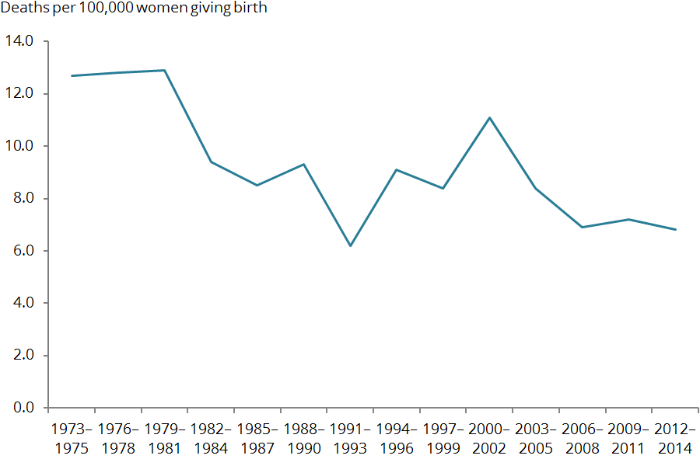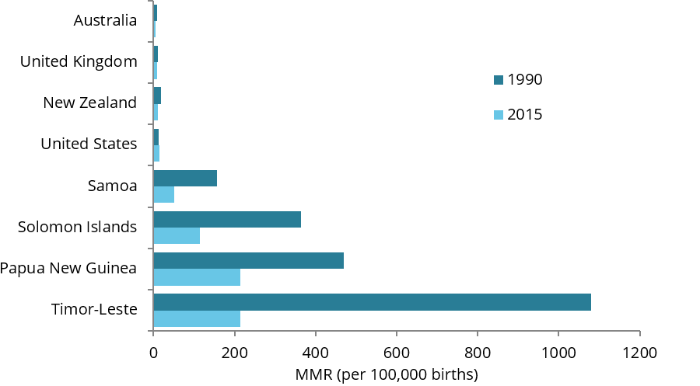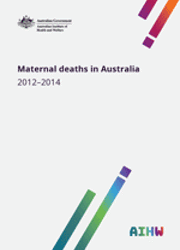Introduction
Maternal death is defined as ‘the death of a woman while pregnant or within 42 days of termination of pregnancy, irrespective of the duration and the site of the pregnancy, from any cause related to or aggravated by the pregnancy or its management, but not from accidental or incidental causes’.
Maternal deaths in Australia have been reviewed and reported using the above definition since 1973. The incidence of maternal death in the community is measured by the Maternal Mortality Ratio (or MMR), and is the number of deaths that occur per 100,000 women giving birth. In Australia, the MMR has decreased from 12.7 per 100,000 women giving birth in 1973–1975 to 6.8 per 100,000 women giving birth in 2008–2012—a 46% reduction.
Figure 1: Maternal mortality ratio, Australia, 1973–1975 to 2012–2014

International comparisons
The World Health Organization (WHO) estimates that 303,000 women died in pregnancy and childbirth in 2015, with 99% of these deaths occurring in developing countries. In 2015, the MMR for Australia was estimated to be 6 per 100,000 births (Figure 2).
In Australia, the MMR is low compared to other countries at 6.8 per 100,000 women giving birth in 2008–2012. The comparable figure for New Zealand is 14.7 per 100,000 women giving birth in 2010–2012 (PMMRC 2016). In the United Kingdom slightly different terminology is used and the comparable figure is 8.5 per 100,000 maternities in 2012–2014 (NPEU 2016).
Comprehensive international comparisons have not been published for 2014, but have been published for 2015 (selected local and comparable countries are shown in the figure below).
Figure 2: International MMR comparisons 1990 vs 2015

Source: Trends in Maternal Mortality 1990 to 2015: Estimates by WHO, UNICEF, UNFPA, World Bank Group and the United Nations Population Division (WHO 2015).



